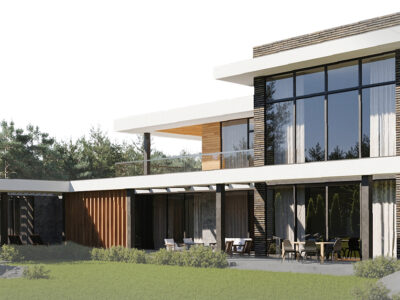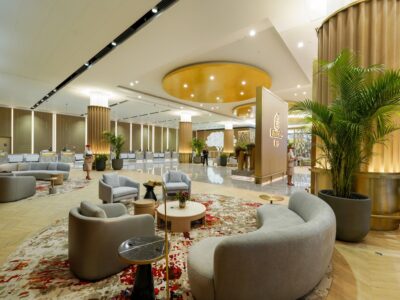It is the wedding season and I was delighted to be invited to a big wedding in Riyadh. It was a happy occasion and I was impressed by the superb flower decoration, the lavishness of the reception and a luxury seafood banquet with caviar, salmon, lobster, shrimp and Wagyu beef. But I wondered about the amount of money that had been spent on this one occasion to celebrate two young people getting married.
Weddings are a huge global industry worth $300bn per year, according to IBISWorld Report. The US tops the list at $72bn, followed by the Indian market estimated at $54bn. In China, the wedding industry market is worth more than $25bn, in the UK $13bn and in the Gulf almost $3bn. Saudi Arabia’s wedding sector is estimated at $550m.
In 2018, the average cost of a wedding in the US was $34,000, with New York as the most expensive location at an average of $77,000. In the UK, the average was $39,000, with London costing $40,500. In China, the average cost of a wedding was $12,000. In the UAE, the average cost of an Emirati wedding is $186,000 (Zayed University Study, 2017).
In Dubai, the average cost ranges from $80,000 to $135,000. And the average cost of a Saudi wedding ranges from $185,000 to $2m. In Saudi Arabia and GCC countries, around $1bn are spent every year on wedding jewellery and bridal dresses. The wedding I attended in Riyadh cost $10m.
In India, a wedding will cost on average from $28,000 to $710,000 and it is estimated that a person in India will consume on his wedding, one-fifth of his whole wealth collected throughout his lifetime. During the past 20 years, India’s wedding industry has boomed with a mixture of traditional and modern and a thirst for gold, luxury and haute couture. At the higher end, the cost of the wedding extravaganza of Indian tycoon Mukesh Ambani’s daughter in December 2018 was estimated to be $100m.
The focus should be on the marriage, the life that comes after the wedding, rather than on that one single day
The cost of wedding celebrations depends on so many variables: the number of guests, venue, event planner, invitations, reception/florist/décor, photographer, jewellery, wedding dress, hair/ make-up, groom’s clothing, wedding cake, entertainment, etc. Some brides aspire to be a princess for their wedding day, selecting a wedding dress which will make them look beautiful and worth a million. The global market for bridal wear is expected to exceed $80bn by 2020.
The TV series ‘Say Yes to the Dress’ shows British and American brides flocking to the bridal shop to buy wedding dresses costing from $1,000 to more than $50,000. In Gulf countries, brides may well spend more, starting from $100,000 up to $350,000. And in India, the daughter of a mining baron recently wore a diamond-encrusted wedding sari costing $2.6m.
It wasn’t always so in a lot of countries. In Arab societies, weddings were a family affair, traditional and conservative. In the UK, society weddings used to be quiet private affairs, and expensive weddings were considered vulgar and unnecessary. This was also largely the case in the US until the 1970s. The rise in fashion and the cult of celebrity with the technology to share images have all impacted on what people think a wedding should consist of.
Most people think their wedding day should be the most important day in their life and want to celebrate it accordingly, but equate expenditure with happiness. In most societies, big weddings are intended to show off wealth and prestige to the world, the outcome of societal pressure and shallow expectations. But an elite wedding is not simply an ostentatious celebration. It is about competition and power, affluence and success, with the guest list being the most important attribute. Guests reflect the status of the host, and successful business people and celebrities are invited, even if they are not personally known to the hosts.
But there are signs of change. The global economic crisis has had an impact on people’s lifestyles and consequently their weddings. Around the world, weddings are shrinking as celebrations are shifting from expensive banquet halls and five-star hotels to a more simple and unconventional places. More young couples are using smartphones to cut expenses on their wedding planning activities to select honeymoon destinations, look for a wedding dress, send invitations and creating a personal wedding site, cutting out the event planner.
In Saudi Arabia, rising costs, value added tax (VAT) and an unemployment rate of 12.9 percent in December 2018 have hit the young generation and some Saudi couples are opting for a cheaper wedding, with smaller celebrations and a shorter guest list. This is a challenge to social traditions and family pressure, and a definite swing in social thought.
Another growing trend is the collective wedding. In Jeddah, the Charitable Society for Marriage and Family Guidance, with the support of Crown Prince Mohammed Bin Salman Al Saud, launched a programme to help 200 brides and grooms to get married, providing financial aid and a mass wedding ceremony. In June 2018, a mass wedding of 504 Saudi men and women was celebrated in Madinah, with the support of Prince Faisal Bin Salman Al Saud, governor of Madinah under the supervision of Al Kholas Charity Society. The open wedding ceremony included folk songs and a show of Arabian horses.
Weddings are shrinking as celebrations are shifting from expensive banquet halls and five-star hotels to a more simple and unconventional places
In the UAE, the Marriage Fund organises mass weddings and helps reduce the cost of weddings of young Emirati couples in rural and urban societies. It encourages them to start their married life with a lower financial burden. It also runs awareness campaigns to cut down on extravagant celebrations. More than 65,000 Emiratis have benefited from the fund and each couple benefits from $19,000. Under the support and direction of Crown Prince of Abu Dhabi, Sheikh Mohamed Bin Zayed Al Nahyan, regular mass weddings have been organised in the Emirates.
The Zayed Arab Mass Wedding took place in Sharjah in December 2018, comprising 250 couples from 20 Arab nationalities and each couple received about $8,000.
In India, the government is developing a policy to limit the number of guests to big weddings and the number of dishes served. As well as causing traffic congestion, an average of 20 percent of food is wasted and thousands of liters of water are lost through extravagance at weddings. The policy also encourages lavish weddings to contribute financially towards marriages of poorer women.
There is an upside to the shrinking wedding. The Economist on May 19, 2018 cited a study published by economists at Emory University in 2015 that found that couples who had married on a higher budget were more likely to get divorced than those on more modest budgets. And those on tighter budgets experience less stress both before and during their weddings.
Of course, there are still many people around the world who will continue to spend lavishly on their weddings. The new image of marriage, love and romance is mixed up with money and the bride and groom want to buy the perfect day as a transition to a happy future.
But celebrations should not be associated with money but with love, devotion, commitment, friendship and family. And the focus should be on the marriage, the life that comes after the wedding, rather than on that one single day.




 Dr. Mona S. AlMunajjed is an award-winning Sociologist, author and advisor on socio-economic issues. (
Dr. Mona S. AlMunajjed is an award-winning Sociologist, author and advisor on socio-economic issues. (



